
The Ten Italian Renaissance Duets Increasingly Point to Being Originally Written for Cornetto and Tenor Trombone.
These mysterious, mostly sacred duets from late Renaissance Venice seem more and more likely to have been written for brass, specifically the cornetto and tenor trombone. The ranges of the music seem to exclude any other likely instruments commonly employed at St. Mark’s Basilica, while fitting the cornetto and trombone like a glove. Historical records point to at least one of each instrument in the employ of the famous Basilica for over a hundred years. If this thesis is correct, these duets form the earliest and most significant collection of literature for mixed brass duo. The sight-reading of these recently rediscovered Venetian/Ten Italian Renaissance Duets were recorded by Duo Brass, featuring Morgen Low on trumpet and David Brubeck on bass trombone and were drawn from transcriptions recorded by Dr. Charles Campbell in Italy. No. 4. Salve Regina, from the Cherry Classics publication, venerates the Virgin Mary, Mother of Jesus the Christ.
FEATURED DUO BRASS RECORDING: 4. Salve Regina
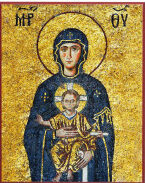
Mosaics
Mosaics are usually found on walls or ceilings and often intended to be viewed from a distance in the tradition of Orthodox Christian Constantinople and her satellites: Bursa, Ravenna, Venice, etc. These mosaics are are most often made of numerous small glass tiles (or tessarae) which are tilted to best catch the light, have painted or golden backing and reflect sacred themes. Some tessarae are stone, or even gems. According to the 1978 Chartwell Books publication, Byzantium, “The year 1425, in which famous Renaissance Paolo Ucello was called to Venice, was a significant date in this respect, for it signalled the end of the traditions of mosaic and Byzantine art in the city of canals.”
The use of stone mosaics, particularly on the floor with tiles not made of glass, significantly predates the New or Eastern Roman Empire at Constantinople-(330-1453 AD). However, it could be considered that it was their empire who raised Mosaics to the form of high art. Many complete Orthodox Christian mosaics may still be viewed at Basilica San Marco, and no doubt were an inspiration to the many great Venetian composers and musicians who performed there.
FEATURED DUO BRASS RECORDING: 5. Angelus ad Pastores
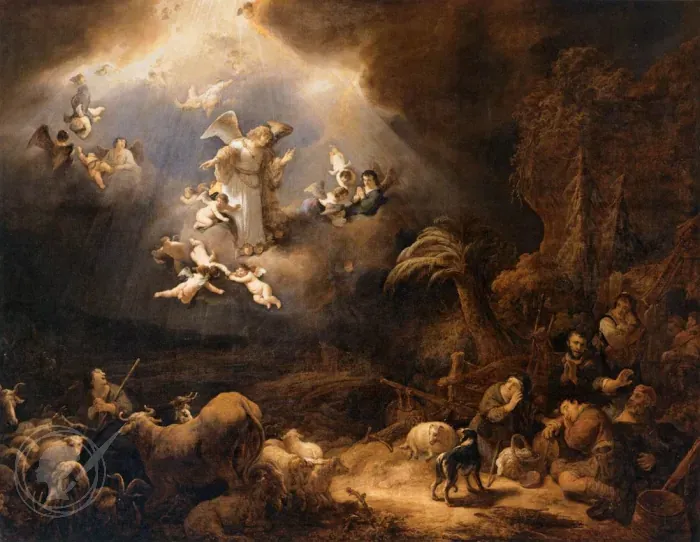
An Inspiration of Angelus ad Pastores: taken from The New Testament of The Holy Bible Luke 2: 10-13 But the angel said to them, “Do not be afraid. I bring you good news that will cause great joy for all the people. 11 Today in the town of David a Savior has been born to you; he is the Messiah, the Lord. 12 This will be a sign to you: You will find a baby wrapped in cloths and lying in a manger.”from Bible Gateway
FEATURED DUO BRASS RECORDING: 10. Laudate Dominum
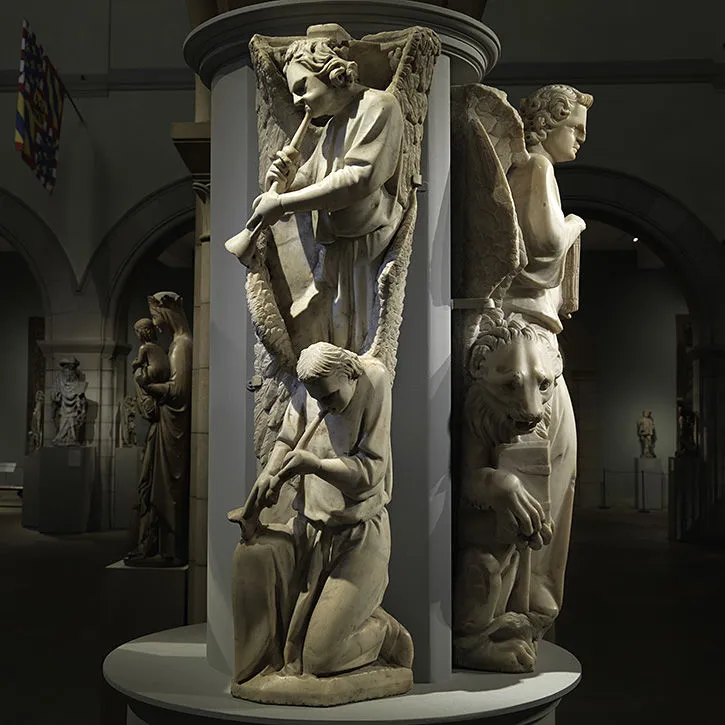
Which Instrument Does Archangel Gabriel Play? While the traditional Hebrew and Latin vision of the six-winged archangel Gabriel depicts playing the Egyptian-invented trumpet, it seems as though the artist here may have been inspired more by the cornetto of Venetian fame. Note the conical shape, the curious curve and the finger placement-as though covering holes. By contrast, owing to a mis-translation of a stringed instrument sackbrett to the brass sackbut in an British Bible translation, English tradition held that angels play both trumpet and trombone, while the musically trained Martin Luther favored the image of the Archangel Gabriel playing the male-voiced brass instrument (and German-invented), posaune or trombone; which is arguably the most tasteful option!
Psalm 117 (116) (An Inspiration for Laudate Dominum)
1 Praise the Lord, all you nations;
extol him, all you peoples.
2 For great is his love toward us,
and the faithfulness of the Lord endures forever.
Praise the Lord.[a]
from biblegateway.com, this is the shortest of all the Psalms from The Bible.
Another Candidate for the First Symphony Orchestra to Rival The Gabrielis? Monteverdi himself conceived of his opera orchestra for Orfeo in three main sections : brass (2 cornetti, 5 trombones and 3-4 trumpets); strings(violins, violas, celli and double basses); and continuo (2 organs, 2 harpsichords and a reed organ for keyboards, 2-3 chitarrone, a double harp, 3 bass viola da gambas, 1 cittern and 2 recorders). While Monteverdi’s impressive Overture to Orfeo features the trumpet quite prominently, when the symphony of brass return to prominence in the Act III, it is two choirs without trumpets. The remaining brass are sounded in a manner every bit as expressive and interesting as the use of the string orchestra. Roughly organized in two choirs or sections, one section had one cornetto and three trombones while the other choir utilized one cornetto with two trombones. This use of cornetto and trombones is noted as further illustration of a relatively common pairing during this era, supporting the conclusion of the duets being written for the two instruments. Additionally, this use of the trombone in ACT III also makes it more clear that the trombone is at least as likely that the instrument of primary importance in the development of the symphony orchestra as the violin, satisfying a minimum of two-thirds up to three-fourths of the symphonic, non-continuo, sound. (116″ on..)
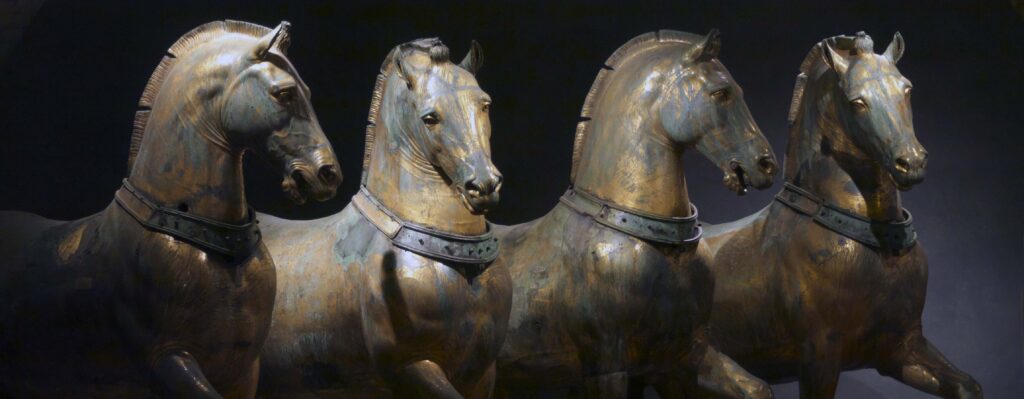
THROUGHOUT THE RENAISSANCE AND EARLY BAROQUE, CORNETTO & TROMBONE ARE PAIRED! This brass writing found in Monteverdi’s Orfeo is sophisticated, complex and virtuosic and not merely trumpeting bombast. The duo pairing of cornetto and trombone finds an echo in this opera orchestra of Monteverdi-one of the greatest opera composer’s of all time. By considering that these duos must satisfy a pairing common to the time, this further argues for the likelihood of these duos being intended for tenor trombone and cornetto. The ranges of the instruments now become doubly important as it is the TWO ranges taken together which fit such an important and historically extant musical pairing so well.
When Monteverdi left his post with the Duke of Mantua (who had commissioned Orfeo), he first travelled to Rome to offer his services to the Pope. When the Pope refused to meet with him, Monteverdi sought and obtained employment at Basilica San Marco in Venice-(La Serenissima). There, he was also lured to produce his operas at what may be considered the first PUBLIC opera house, Teatro San Cassiano. Monteverdi’s successors at Venice’s Teatro San Cassiano included many great composers, and most famously, Antonio Vivaldi!
Did Monteverdi compose the first relatively complete opera? It is almost certainly the earliest opera most commonly stage and still stands today. Did Claudio Monteverdi and Alessandro Striggio’s Orfeo first add dance (or ballet) to opera? Was Monteverdi’s Orfeo the first to provide opera a memorable overture of significance?
Venice’s Claim to the Originator of Opera to Rival Florence. Interestingly, in 1585 AD Venice, Andrea Gabrieli composed music to accompany the texts to the choruses of Sophocles’ Oedipus Rex. These beautifully homophonic settings seem to predict the later ‘second practice’ of having but one melody-seemingly “leap frogging” decades of rival monody to arrive at a more modern outcome. Similarly, given that the stated goal was to accurately recreate Ancient Greek Drama, the thesis of the Florentines and their Camerata was that these dramas were ENTIRELY sung. This has more recently given way to the Venetian thesis of Andrea Gabrieli that that it was more likely only the choruses.
When added to the other operatic accomplishments of Venice: publishing the original treatise on Opera, opening the first public opera house in 1637 AD and welcoming and encouraging the operatic career of the greatest composer of early opera, Claudio Monteverdi, Venice’s contributions to early opera begin to rival that of even Florence herself. Monteverdi, from Cremona, was employed at the court in Mantua when Orfeo was composed, but composed his last three great operas in Venice, while mounting productions of previous operas there as well. Monteverdi was certainly opera’s principal popularizer if not her greatest pioneer, as well.
Andrea Gabrieli’s composition was four-years before Bardi & Cavalleri appeared to present the first successful performances of a multi-movement series of recitatives for a Medici wedding in 1589 AD and twelve-years before the first opera, Drama per Musica-(Dafne), was presented in 1597 AD (now lost). Gabrileli’s Oedipus Rex of 1585 was fully fifteen years before the first surviving opera, Euridice, in 1600 AD!

The 800-Pound Gorilla in the First Symphony Orchestra… If one is seeking the most music from a single instrument, keyboard instruments cannot be ignored.
Keyboards feature in early sacred and secular instrumental ensembles, as a staple of continuo in the Baroque and even a member of early classical symphonies. One of the favorite aspects for many musicians playing in a ballet orchestra is not only the great literature but the frequent inclusion of the piano within the symphony orchestra. From Broadway pit orchestras, to jazz trios to almost any form of accompaniment-keyboards are king! Monteverdi employed contrasting use of keyboards and harp in Orfeo to provide contrasting emotional color that reflected the textural content of the sung texts in an impressive manner. (Peri used similarly contrasting keyboards in Euridice.). Many symphonic compositions by both Andrea and Giovanni Gabrieli as well as their prize pupil, Heinrich Shutz, include keyboard.
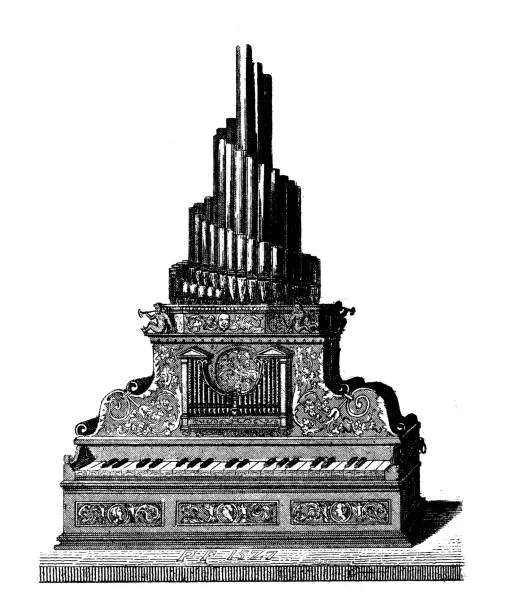
In the history of the sacred an operatic symphony orchestra, a case could be made that the pipe organ and keyboard instruments are of central importance. In many sacred and operatic settings, one or two keyboard instruments may provide the fundamental sound of the ensemble and other instruments serve either as contrasting choirs or as soloistic colors. An organist alone, or especially an organist in conjunction with another keyboard instrumentalist such as a harpsichordist or pianist, may indeed provide a more complete basis of symphonic sound than even a trio of trombones or two sections of violins! Listeners to the operatic symphony orchestra of Monteverdi’s Orfeo may draw a similar conclusion.
The very first, initial symphonic pieces, where specific instruments were indicated, were direct descendants of keyboard pieces. The main limitation for consideration as the primary instrument at the genesis of the symphony orchestra, as opposed to the trombone and violin, is that keyboard is a consistent INTERFACE, but the instruments change wildly from harpsichord, organ, piano, clavichord, synthesizer, etc. As an interface, however, keyboard reigns supreme.
For a more scholarly discussion of opera, please consider this link to the papers presented at the University of Illinois on the 400th anniversary of the creation of opera in 2000 AD.: http://www.sscm-jscm.org/v9no1.html
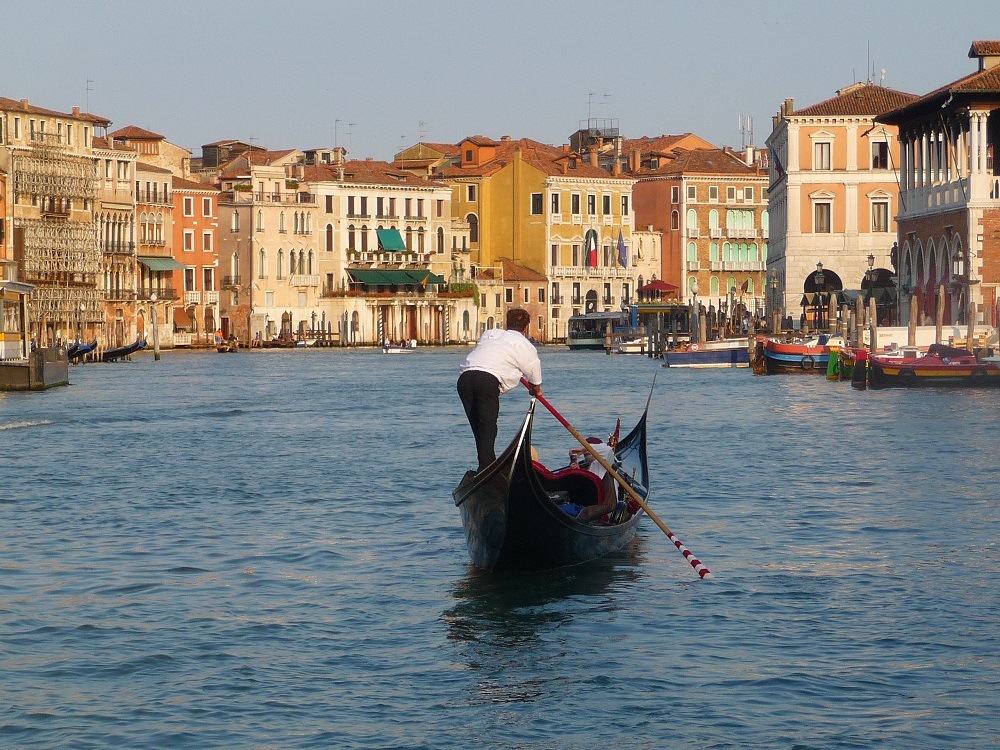
Would you like to heat more Venetian Renaissance Brass Duos by DUO BRASS, featuring Morgen Low on Trumpet and David Brubeck, bass-trombone? This is the THIRD article featuring their recorded sight-reading session. The second recorded duos from this collection 6. Omnes gentes 3. Ego flos campi, may be found HERE:
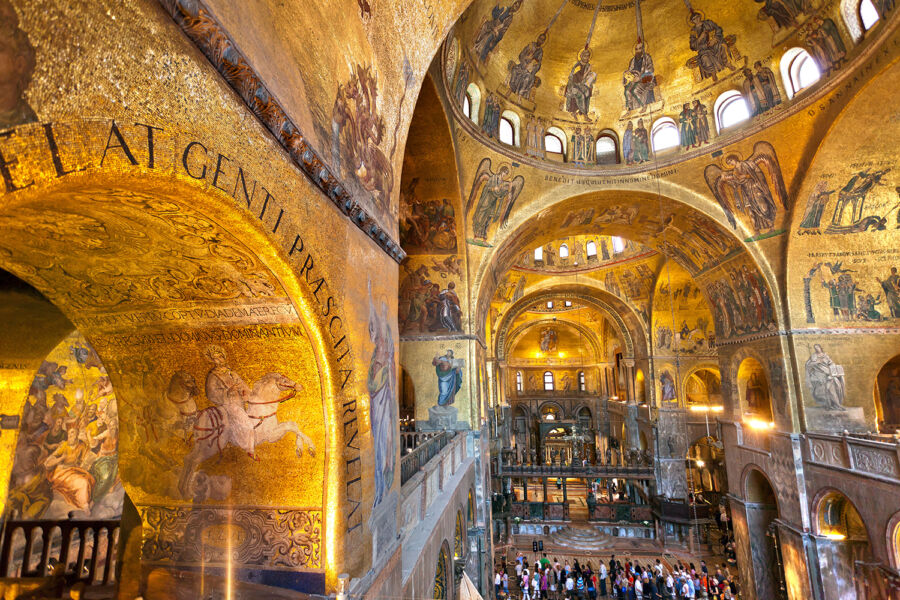
Find the FIRST three recordings, Canzona Francesca a’ 4 del Segundo Tuono , Canzona francese a 8 dette la Carissima & 7. Panatum cor meum, and accompanying article may be found HERE:
c. 2025 David William Brubeck All Rights Reserved.
COPYRIGHT NOTICE/DISCLAIMER
FAIR USE:
COPYRIGHT DISCLAIMER UNDER SECTION 107 OF THE COPYRIGHT ACT 1976,
ALLOWANCE IS MADE FOR “FAIR USE” FOR PURPOSES SUCH AS CRITICISM, COMMENT, NEWS REPORTING, TEACHING, SCHOLARSHIP AND RESEARCH.
FAIR USE IS PERMITTED BY COPYRIGHT STATUTE THAT MIGHT OTHERWISE BE INFRINGING. NON-PROFIT, EDUCATIONAL OR PERSONAL USE TIPS THE BALANCE IN FAIVOR OF FAIR USE
